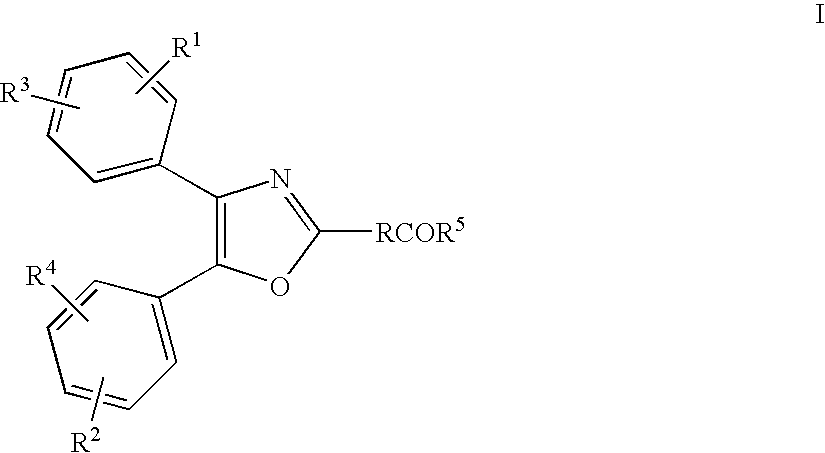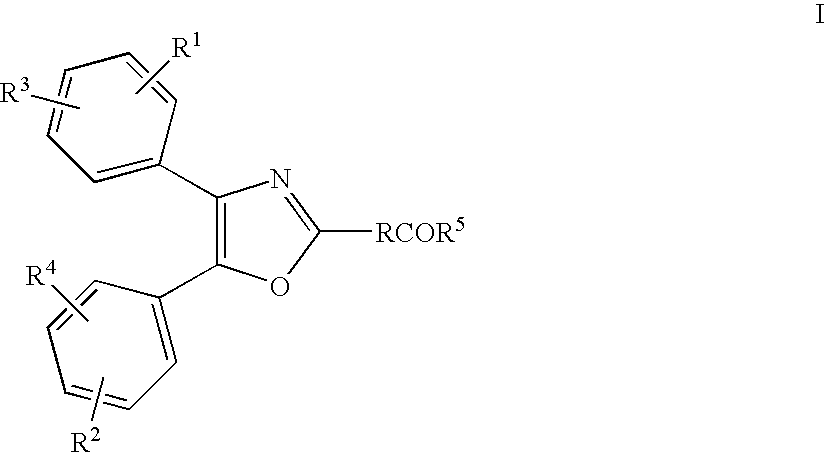Treatment or prevention of pruritus
a technology of pruritus and treatment, applied in the field of pharmaceutical invention, can solve the problems of socially disabled scratching behaviour, serious impairment of quality of life, single pharmacological mechanism cannot explain all causes of pruritus, etc., and achieve the effects of strong therapeutic potential, strong inhibiting effect, and improved erythema and scaling
- Summary
- Abstract
- Description
- Claims
- Application Information
AI Technical Summary
Benefits of technology
Problems solved by technology
Method used
Image
Examples
example 1
[0221] A topical pharmaceutical composition according to the invention was prepared by dissolving 2.5% or 5.0% of the monoethanolamine salt of Oxaprozin in the water phase of the topical emulsion with the following composition (w / w):
Hydrophobic phaseTween 80 ™ (Polyoxyethylene sorbitan monooleate)1%Span 60 ™ (emulsifier of the sorbitan ester type)2%Medium chain triglycerides (MCT)20% Petrolatum, white10% Paraffin, light10% Cetanol4%Hydrophilic phaseOxaprozin monoethanolamine salt2.5% Water42.5% Xanthan gum0.5% Glycerol2%Propylenglycol2%Benzylalcohol0.5%
[0222] The emulsion was prepared by first heating the lipophilic phase and some of the hydrophilic phase (xanthan gum and water) to 70 degrees Celsius, and mixing them. The remaining hydrophilic phase is heated to 50° C. and added subsequently cooling them under agitation.
[0223] The monoethanolamine salt was prepared according to the following advantageous method:
[0224] 10.0 g Oxaprozin was dissolved in 230 ml ethyl acetate u...
example 2
[0226] A 71 year old male subject had been suffering from irritant contact dermatitis for more than 5 years. The dermatitis was usually situated on the legs. The symptoms of the dermatitis was erythema, scaling and significant pruritus.
[0227] During the last 5 years the subject had regularly been treated with strong topical steroids with a relatively good therapeutic effect on the erythema, but with no short term effect on the pruritus. During an aggravation of the dermatitis associated with a strong itch, the subject initiated a treatment with the emulsion according to example 1 containing 5.0% of the monoethanolamine salt of Oxaprozin. The subject experienced an immediate and complete alleviation of the pruritus 20 minutes after application of the emulsion of example 1. To maintain this level of efficacy, the subject had to reapply the emulsion three times daily the first day and twice daily during the next two weeks, where the erythema and scaling were gradually reduced. After 1...
example 3
[0230] A 37 year old female, which previously had experienced insect bite inflammation in skin with pruritus and oedema as predominant symptoms, was treated with the emulsion according to example 1 containing 2.5% of the monoethanolamine salt of Oxaprozin following an insect bite by a mosquito. This treatment completely alleviated the pruritus after 20 minutes of application of the emulsion and the oedema disappeared overnight. Contrarily, treatment of previous mosquito attacks with hydrocortisone ointment did not satisfactorily reduce pruritus and oedema.
PUM
 Login to View More
Login to View More Abstract
Description
Claims
Application Information
 Login to View More
Login to View More - R&D
- Intellectual Property
- Life Sciences
- Materials
- Tech Scout
- Unparalleled Data Quality
- Higher Quality Content
- 60% Fewer Hallucinations
Browse by: Latest US Patents, China's latest patents, Technical Efficacy Thesaurus, Application Domain, Technology Topic, Popular Technical Reports.
© 2025 PatSnap. All rights reserved.Legal|Privacy policy|Modern Slavery Act Transparency Statement|Sitemap|About US| Contact US: help@patsnap.com



